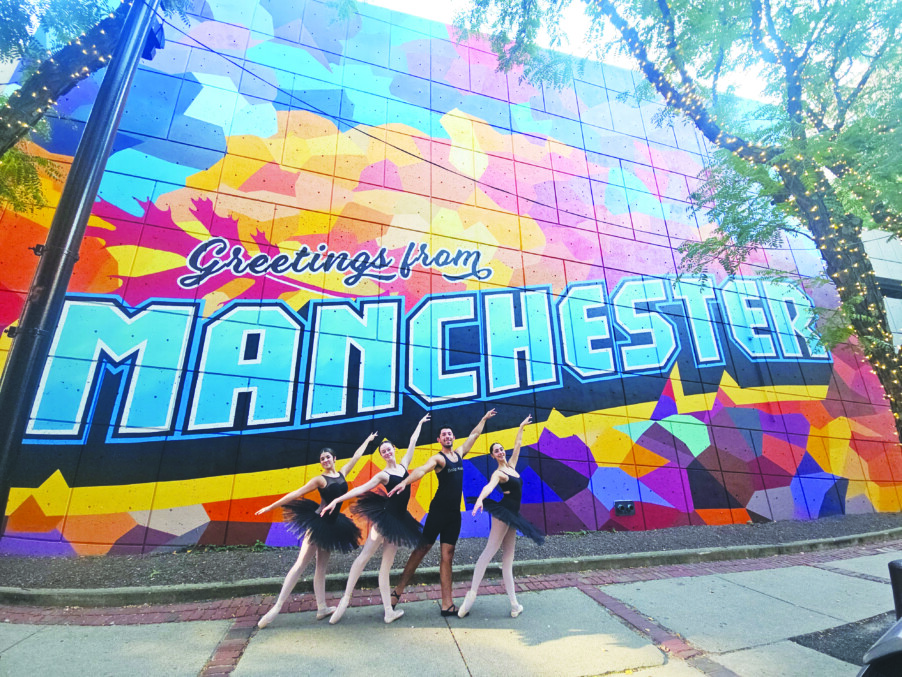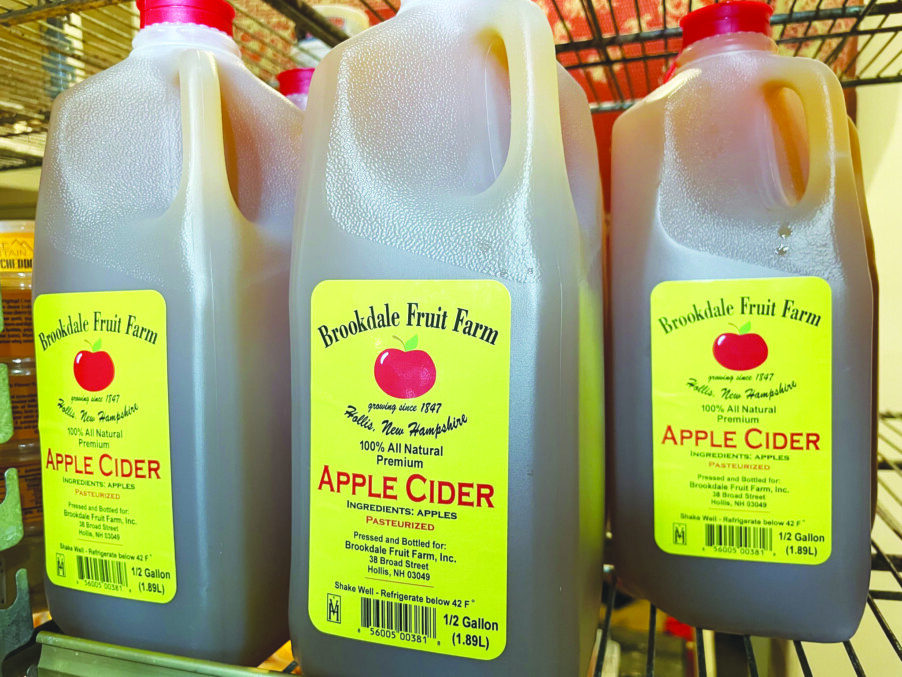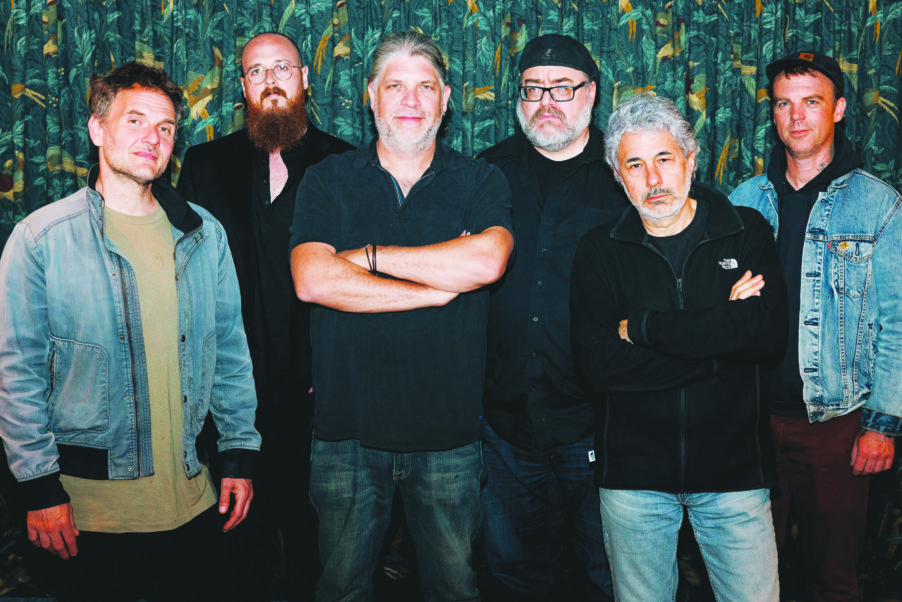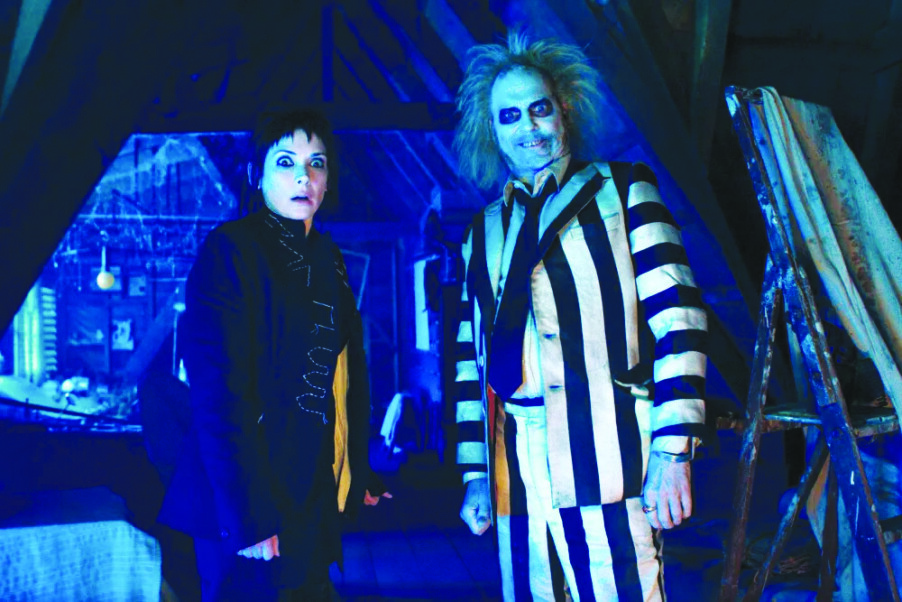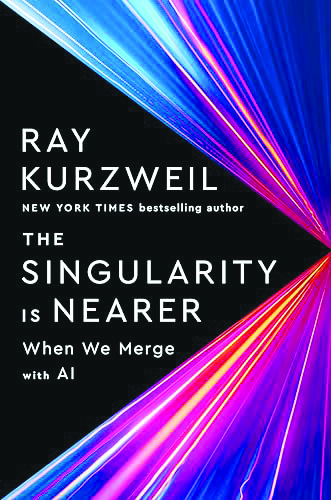This year’s apple harvest looks (Golden) delicious
This year’s apple harvest looks (Golden) delicious
By John Fladd
[email protected]
2023 was an exceptionally bad year for apples in New Hampshire.
After a particularly frigid snap in February, temperatures in May across the state plunged well below freezing and killed off almost all the apple blossoms. Without apple blossoms, there can’t be any apples. Many apple-growers lost 80 percent or more of their crop. Sen. Jeanne Shaheen urged Congress to provide disaster assistance to New Hampshire farmers impacted by the weather. The event was later declared a disaster by the U.S Secretary of Agriculture.
But that was last year.
2024 has been as good as 2023 was awful.
“It’s a good apple year,” said Madison Hardy, the president of the New Hampshire Fruit Growers Association (38 Broad St, Hollis, 465-2241, nhfruitgrowers.org). “The weather has been cooperating and people have good crops. We’re looking forward to the fall agritourism since we didn’t have the apples last year; it’s shaping up to be a good fall here.”
In spite of some hail earlier in the summer, the weather has been excellent for apples.This spring and summer were warm, with plenty of, but not too much, rain, and Hardy said the September weather has cooperated, too.
“We’ve had some good, nice, cool weather that’s coming in. That really helps the apples color up this time of year. A lot of people are wrapping up picking Paula Reds and early varieties and we’re starting to get into the McIntosh and Cortland season coming up,” Hardy said.
Dianne Souther, co-owner of Apple Hill Farm (580 Mountain Road, Concord, 224-8862, applehillfarmnh.com), agrees that this year has been a lot less stressful than 2023. Her farm was one of the ones that lost more than 80 percent of its apple crop, but like other apple-growers, she is cautiously optimistic.
“This year’s crop is looking good,” Souther said. “The weather’s been good to us this year. We expect to pick through Indigenous People’s Day in the middle of October.”
Unlike Dianne Souther, Tim Bassett at Gould Hill Farm (656 Gould Hill Road, Contoocook, 746-3811, gouldhillfarm.com) wasn’t badly affected by last year’s weather — at least not directly.
“We did have a pretty decent crop last year,” Bassett said, “and unfortunately I think the news was out that there were no apples and we just didn’t have people coming out. So it just seemed [business was] very off last year and not because we didn’t have apples, just because I think people thought nobody had apples.”
Bassett said that this year is looking good, though.
“We’ve been open for a week for Pick Your Own,” he said. “Our hard cider company is open weekends, and we have a restaurant. I think we have nine varieties of hard cider going. So we kind of try to get people and give them a full day’s experience here,”
As Madison Nelson said, picking has already started on early-season varieties of apples like Paula Red, McIntosh and Summermacs. Mid-season varieties should be ready to pick sometime until the end of September. These include Cortland, Empire, Gala and Macoun apples. Late-season varieties like Mutsu, Honeycrisp, Braeburn and heirloom cider apples should be available through October, and perhaps a little longer.
APPLE FACTS
According to the United States Department of Agriculture (USDA), as of 2022 (the most recent year with published data) New Hampshire had 271 working apple farms, covering 1,435 acres.
According to Gould Hill Farm (656 Gould Hill Road, Contoocook, 746-3811, gouldhillfarm.com), far and away the most popular apple in New England is the McIntosh, which was developed from a sapling graft in 1870 by John McIntosh of Ontario, Canada. It is a sweet, firm apple, good for out-of-hand eating or baking.
The biggest apple producer in the U.S. is Washington state, which produces 6.7 billion tons of apples annually, according to the USDA.
Pick Your Own
Here are a some of the nearby orchards allowing you to pick your own apples. Dates and times may change according to the weather.
- Applecrest Farm Orchards (133 Exeter Road, Hampton Falls, 926-3721, applecrest.com) Open 7 days a week, 9 a.m. to 6 p.m. The orchard also features a corn maze and a sunflower trail. For up-to-the-minute weather and picking conditions, call the orchard’s PYO hotline at 926-3721. Apples can also be ordered online.
- Apple Hill Farm (580 Mountain Road, Concord, 224-8862, applehillfarmnh.com) Open 7 days a week, 8:30 a.m. to 5 p.m. This year there are 19 varieties of apples available. Different varieties will be ready to pick at different times throughout the season. Apple prices for PYO is $24 for a peck, $36 for a half bushel.
- Appleview Orchard (1266 Upper City Road, Pittsfield, applevieworchard.com, 435-3553) Open for PYO Saturday and Sunday only, 10 a.m. to 6 p.m. Enjoy baked treats, ice cream and a petting zoo.
- Brookdale Fruit Farm (41 Broad St., Hollis, 465-2240, brookdalefruitfarm.com) Open 7 days a week, 8 a.m. to 6 p.m. An ice cream stand is open daily from 11 a.m to 6 p.m. Call the Farm for current picking conditions.
- Carter Hill Orchard (73 Carter Hill Road, Concord, 225-2625, carterhillapples.com) Open 7 days a week, 8 a.m. to 6 p.m. An on-site bakery offers a variety of pies, sweet breads and cookies, cider doughnuts and whoopie pies. Visit the Orchard’s website for apple variety descriptions, calendar and orchard map.
- Currier Orchards (9 Peaslee Road, Merrimack, 881-8864, currierorchards.com) Open Tuesday through Sunday, 10 a.m. to 6 p.m., with the last entry for PYO at 5 p.m. Apple varieties include Jonastar, Honeycrisp, Liberty and Empire.
- Elwood Orchards (54 Elwood Road, Londonderry, 434-6017, elwoodorchards.com) Open 7 days a week, 8 a.m. to 6 p.m. There is a corn maze on site.
- Gould Hill Farm (656 Gould Hill Road, Contoocook, 746-3811, gouldhillfarm.com) Open Tuesday through Sunday, 10 a.m. to 5:30 p.m. More than 100 varieties of apple are available during the picking season. Visit the website for a description of each variety and to find out which are ripe and ready to be picked.
- Hackleboro Orchards (61 Orchard Road, Canterbury, 783-4248, hackleboroorchard.com) Open seven days a week, 9 a.m. to 6 p.m. Pick your own in half peck, peck, and half bushel amounts. The orchard’s owners report having a very good crop this season.
- Hazelton Orchards (20 Harantis Lake Road, Chester, 490-9921, facebook.com/HazeltonOrchardsChesterNH) Open 10 a.m. to 6 p.m. Monday through Friday, 10 a.m. to 5 p.m Saturday and Sunday. Many varieties of apple, including McIntosh, Honeycrisp, Cortland, Gala and Zestar.
- Kimball Fruit Farm (184 Hollis St, Pepperell, Mass., 978-433-9751, kimball.farm) Open 7 days a week, 9 a.m. to 6 p.m.
- Lavoie’s Farm (172 Nartoff Road, Hollis, 882-0072, lavoiesfarm.wordpress.com) Open 7 days a week, 8 a.m. to 7 p.m. Apple varieties include Fuji, Spartan Macs, Gravenstein and Sansa. Guests can enjoy hay rides, a corn maze, a corn boil and apple cider, all free with any produce purchase.
- Lull Farm (65 Broad St., Hollis, 465-7079, livefreeandfarm.com) Open 7 days a week, 7 a.m. to 7 p.m.
- Mack’s Apples/Moose Hill Orchard (230 Mammoth Road, Londonderry, 434-7619, macksapples.com) Open 7 days a week, 9 a.m. to 6 p.m. Mack’s Apples is the largest pick-your-own destination in New Hampshire. Driving between picking stations is recommended. Call the Orchard’s hotline at 432-3456 for the latest picking conditions and to find out what varieties are ready.
- McLeod Brothers Orchards (735 N. River Road, Milford, mcleodorchards.com) Open Monday through Friday, 1 to 5:30 p.m., Saturday and Sunday, 10 a.m. to 5:30 p.m. Apple varieties include McIntosh, Gala, Mutsu and Cortland.
- Meadow Ledge Farm (612 Route 129, Loudon, 798-5860, meadowledgefarm.com) Open 7 days a week, 9 a.m. to 6 p.m. Fresh-pressed apple cider and award-winning apple cider doughnuts are available at Meadow Ledge’s farm store. For the most current information, visit the Farm’s Facebook page.
- Oliver Merril and Sons (569 Mammoth Road, Londonderry, 622-6636, facebook.com/olivermerrillandsons) Open Monday through Friday, 10 a.m. to 5 p.m., Saturday, 9:30 a.m. to 4:30 p.m., and Sunday, 10 a.m. to 4:30 p.m.
- Smith Orchard (184 Leavitt Road, Belmont, 387-8052, facebook.com/SmithOrchardNH) Open 7 days, 9 a.m. to 5 p.m.
- Stone Mountain Farm (522 Laconia Road, Belmont, 731-2493, stonemtnfarm.com) Open Thursday to Monday, 10 a.m. to 6 p.m., Tuesday and Wednesday, 10 a.m. to 4 p.m. 30 apple varieties are available as they become ripe.
- Sunnycrest Farm (59 High Range Road, Londonderry, 432-7753, sunnycrestfarmnh.com) Open 7 days a week, 9 a.m. to 6 p.m. Call Sunnycrest’s PYO hotline at 432-9652 for daily updates on picking conditions and varieties available. There is a “Meet the Farm Animals” area, home to goats and sheep along with the occasional pig. Visitors can feed and pet the animals through the fence.
- Washburn’s Windy Hill Orchard (66 Mason Road, Greenville, 878-2101, washburnswindyhillorchard.com) Open Monday through Friday, 10 a.m. to 5 p.m., Saturday and Sunday, 9 a.m. to 6 p.m. There is a corn maze, ice cream and hot apple cider doughnuts.
Making an apple pie is as easy as — well, it’s not hard
Advice from an expert
Lynn Donnelly is the owner of Bittersweet Bake Shoppe (272 Derry Road, Litchfield, 978- 649-2253, bittersweetbakeshoppe.com), a small-batch bakery that specializes in seasonal desserts. It would be fair to call her an apple pie expert.
What makes a good apple pie?
A well-made apple pie has color and texture — the greens, the reds — brown sugar so it’s a little more caramely, and of course a fresh homemade crust.
A top and bottom crust?
Yes, though we do switch it up [at the bakery]. We do a Dutch crust with the crumbs on top, and sometimes we do a lattice crust. Some people just want it like an old-fashioned rustic tart, so to speak. We just fold the edges in. But our typical [apple pie] is a two-crust pie.
What’s the secret to a good crust?
The secret to the crust is a secret.
Actually, it’s a technique. Everybody has one. We have one that works for us, but you have to make sure that fat you choose — whether it’s shortening or butter or a little of both — you have to make sure it’s good and cold so that when you bake it, your layers will explode and pop with the fat and create the flakes.
What kind of fat do you use in your crust?
Do you ever use shortening? The shortening crust can be delicious. But stay with the Crisco because at least you know where it’s been, what it’s doing, and it is non-hydrogenated. They were the first ones to jump into that. I will use shortening in my crust because it adds to the flake.
Do you cook the apples down before you put them in the crust?
Not really. The apples are the last thing to go in. I make my filling, the roux [a thickened sauce], and I put in my fruit last. And then I cook it until it’s just right. The apples aren’t fully cooked. They’re only somewhat cooked. And it’s only because they’ll release some juice and change the texture of the roux. So you’ve got to make sure that all comes together; then you pour it into the pie, and it’ll finish baking in the oven. That way, your apples aren’t mushy. You want them to hold up so when you slice it [the pie] you’ll see pieces of apple.
—John Fladd
Apple pie
This recipe comes from owner Brookdale Fruit Farm owner Cameron Hardy’s grandmother Betty Hardy. Cameron and his wife, Nicole, recommend baking this pie with raw, crispy apples, preferably Baldwin, Northern Spy or Jonagold. They, too, are proponents of a Crisco crust.
1 recipe pastry for a 9-inch double-crust pie
1/2 cup unsalted butter
3 Tablespoons all-purpose flour
1/4 cup water
1/2 cup white sugar
1/2 cup packed brown sugar
8 apples, peeled, cored and sliced
Preheat oven to 425°F (220°C).
Melt the butter in a saucepan. Stir in flour to form a paste.
Add water, white sugar and brown sugar, and bring to a boil. Reduce temperature and let simmer.
Place the bottom crust in your pan. Fill with apples, mounded slightly.
Gently pour the sugar and butter liquid over the apples, and cover with a latticework of crust. Bake 15 minutes in the preheated oven, then reduce the temperature to 350°F (175°C). Continue baking for 35 to 45 minutes, until the apples are soft.
Additional apple reading
To learn more about the long and strange history of apples, Louisa Spencer from Farnum Hill Cider recommends reading The Botany of Desire: A Plant’s-Eye View of the World (2001) by Michael Pollan. “In a way, I think that’s the best book he ever wrote,” she says. The movie documentary based on the book was partially filmed at Farnum Hill’s orchard.
Apple by the glass
A look at cider, brandy & wine — from apples
By John Fladd
[email protected]
When most of us think about apple season, we think of apple-picking, pies and lunch boxes. There is a completely different side to apples, though — one best enjoyed in a glass.
Flag Hill Distillery and Winery (297 N. River Road, Lee, 659-2949, flaghill.com) makes an apple-cranberry wine around the holidays, but its main interest in apples is for making brandy. Brian Ferguson is the owner of Flag Hill. According to him, fermenting apples and distilling brandy from them are important, and taken very seriously, but the key process for making excellent apple brandy is how it’s aged.
“After fermentation, we double pot distill [the cider],” Ferguson explained. “It’s very similar to the way we would make bourbon, but with a very full flavor, very rich. And then we put it in a barrel and it sleeps there for about six years.” He said Flag Hill uses several types of oak for the barrels — toasted, to bring out specific flavors to infuse the brandy — but that it is vital that some of the oak has been aged for at least three years, which allows microscopic strands of fungi to tunnel through the wood. “The mycelium [fungus], as it grows throughout the oak, creates more porosity over that longer period of time,” he said. “So we get more micro-oxidation during this process. These are much more expensive barrels to use, but they result in much more of the exciting compounds that we’re looking for out of the brandy.” The porosity — the tiny tunnels — in the oak provides more surface area to allow the exchange of flavor-bearing chemicals.
Apple brandy and its slightly more relaxed cousins apple wine and hard cider are enjoying a renaissance. It has taken about a century to recover from an involuntary hiatus that knocked the apple alcohol industry back on its heels since 1920. The Volstead Act, otherwise known as Prohibition, was rough on apple farmers.
Up until that time, in the U.S. and around the world, apples were used more for making alcohol than for eating or cooking. Louisa Spencer of Farnum Hill Ciders (98 Poverty Lane, Lebanon, 448-1511, farnumhillciders.com) explained that American orchardists had to rethink everything about their industry. Prior to Prohibition, the vast majority of apples grown in the U.S. were specialized varieties that were excellent for fermenting into hard cider but not very good for eating out-of-hand.
“When you’ve got acres and acres and acres of woody plants that do not produce anything that anybody would put in a pie or a fruit bowl, what are you going to do?” Spencer said. “You can see in these old agricultural journals people talking about in the run-up to Prohibition whether they’re going to stop making cider, and what they’re going to do was disassociate the word ‘cider’ from alcohol. And alone on Earth, we became a culture that thinks of cider as apple juice. That was quite intentional. They distinguished sweet cider from hard cider and it happened incredibly fast.”
For several generations, apples remained lunch-box fruit and cider was a cold, refreshing, alcohol-free beverage. That changed in the 1980s. Woodchuck hard cider, made from Vermont apples, was the first mainstream commercial cider, and Farnum Hill led the way with artisanally made cider from heirloom varieties of apple.
“So the decision was made here at Poverty Lane Orchards to plant a whole lot of apples that no one in the States had ever heard of and no one would be able to eat even if they had heard of them,” Spencer said.
Since then, apple-based alcohols have become increasingly popular, especially in apple-growing regions like New England.
In addition to making traditional red and white wines, Sweet Baby Vineyard (260 Stage Road, Hampstead, 347-1738, sweetbabyvineyard.com) produces eight different fruit-based wines. Lewis Eaton is the vineyard’s owner; he has made apple wines for 16 years, making his vineyard one of the pioneers in New Hampshire apple wine. “You know it,” he said. “We’ve been around a bit.”
Sweet Baby makes two apple wines: a cranberry-apple wine, and one with apples only. Their complex flavors come in part from the number of varieties of apple used to make them.
“[We use] 13 different kinds of apples,” Eaton said, “heirloom and standard varieties. The heirloom apples are old English-style apples.” Sweet Baby starts with a proprietary blend of apple juices from Applecrest Farm Orchard (133 Exeter Road, Hampton Falls, 926-3721, applecrest.com). “It’s what they call their holiday cider,” Eaton said. “So it’s the best of the best, in that it has all those 13 or so different kinds of apples. Obviously they adjust the blend, depending on whether it’s too sweet or too tart, and then we take it in as fresh pressed cider. We remediate it to get up to 12 percent alcohol.” Eaton and his team use Champagne yeast, which tolerates higher levels of alcohol than traditional cider yeast, which normally tops out at 4 or 5 percent alcohol by volume.
Sweet Baby Vineyard makes about 400 cases of the straight apple wine per year, and 200 cases of their apple-cranberry.
“We sell out of it every year,” Eaqton said. The apple-cranberry wine is extremely popular around the holidays. “It goes bonkers and we never seem to make enough,” he said. “People get a little mad, but whatever. It is what it is. Maybe that makes them want it more, I suppose. If we made too much of it, then they wouldn’t want it so much.”
By contrast, Pete Endris, the owner and cider-maker at Bird Dog Farm and Cidery (150 Bayside Road, Greenland, 303-6214, birddogcider.com), has been in business for two years. He, too, is a firm believer in using juice blends from different apples to make a complex cider.
“At Bird Dog we focus on making ciders using traditional methods,” he said, “and definitely paying attention to the right cider varieties. So what I like to tell people is much like with wine, you don’t make the best wine from table grapes, and it’s usually the case that you don’t make the best cider with just any old apple.” He credits the popularity of hard ciders to the resurgence of bitter-tasting heirloom apple varieties. “They tend to have more tannins, which are usually associated with bitterness or complexity, and they have different flavor compounds that, honestly, over the years have made them maybe less desirable for eating, and some of these apples have fallen by the wayside. And the traditional cider movement is bringing some of these apples back to the forefront.”
As a small cider producer, Bird Dog Farm is just getting started. “We’re just getting kind off the ground,” Endris said. “We make around 2,000 gallons of cider a year, but alongside the cider we’re growing out our orchard, so we have nearly 1,500 trees planted. My wife and I bought this farm, which for most of its modern history was a working dairy farm, but it hasn’t been a working farm for about 50 years. And so we have planted all these trees, and we’re growing them in a high-density fashion, like a vineyard, basically. They’re on a trellis, they’re dwarf rootstocks, the trees only get to be about maybe 12 feet tall, and they’re kept within about a 3-foot space.”
Endris is in the process of opening a tasting room where customers can compare Bird Dog Farm’s eight varieties of cider.
“We’ve been spending a lot of time renovating an old dairy barn built in the 1950s,” he said, “and it now houses our cidery. Recently we’ve been focusing on the tasting room part of it, which we will be planning to open up here in late September.”
An apple vocabulary word to make you look cool
Under certain conditions, apples can develop rough, brownish skins. This is called “russeting”. Some varieties that are particularly susceptible to russeting have the word “russet” in their names — golden russet or English russet, for example. Russet potatoes are called that because they are entirely covered with russetted skin.
Featured Photos : Brookdale Fruit Farm. Courtesy photo.

